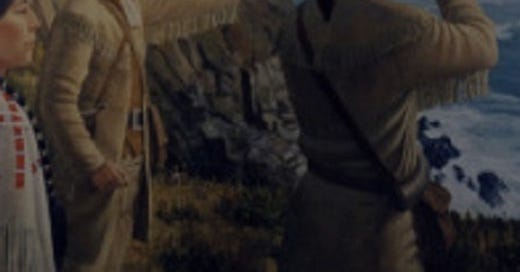Readers: As I head to Pierre, the capital of South Dakota, to soak up more Lewis & Clark history, I leave you with two interesting stories of “life on the road” with Captains Lewis & Clark. Diane
Most Americans are familiar with the Corps of Discovery, writ large. But few know all the details. This writer is always looking for captivating stories within the men’s journals.
SALT WAS A NECESSITY OF LIFE
The crew arrived at the Pacific Ocean on the northern side of the very wide mouth of the Columbia River, at the present-day Long Beach Peninsula, Washington.
Captain Meriwether Lewis wanted to winter over on the south side of the Columbia River, in part, to be closer to the ocean. He wanted to put his men to work making salt from seawater. To make salt, the men needed easy access to both seawater and wood, as well as enough game to sustain them. Salt was important for meat preservation and, thus, for their survival on the return trip. In addition, Lewis and all the men craved salt. Captain Clark disapproved: “Salt water I view as an evil in as much as it is not helthy.”
Nevertheless, the day after they chose the spot to build Fort Clatsop in present-day Oregon, Clark took five men further south to find a place to make salt and to blaze a trail to & from it. That was December 8, 1805. It wasn’t until January 1, 1806 that they found the right location and began their “Salt Works.” This spot was on the Necanicum River, south of present-day Seaside, Oregon, about 15 miles by inland trail and rivers from Ft. Clatsop. Joseph Fields, William Bratton and George Gibson remained at the Salt Works when Clark and the others returned to the fort.
The three men boiled the seawater in five large kettles until it evaporated, then they scraped the salt from the sides of the kettles. On January 5th, the salt-makers brought in a sample of their product. “We found it excellent, fine, strong, & white,” Lewis wrote. “This was a great treat to myself and most of the party . . .”
By February 3, 1806 they had produced eight gallons (one bushel) of salt. However, the captains believed they needed three times that amount to sustain them until they reached their caches of food on the Missouri River. When the men’s efforts had produced 20 gallons of salt, the Salt Works was abandoned on February 21st.
JONAH’S GIFT
On December 29, 1805 the Clatsop Indians informed the captains that a whale had foundered on the coast near Tillamook Head in present-day Oregon. Lewis quickly decided to travel to the whale via canoes with eleven men to get some oil and blubber. Sacagawea and her baby accompanied them after arguing with Lewis “that she had traveled a long way with us to see the great waters, and now that monstrous fish was also to be seen.”
They didn’t set out until January 7th, however, because the ocean breezes were blowing too hard. By the time Lewis and his entourage arrived the whale was a mere skeleton and the Tillamook Indians were boiling blubber for its oil.
After vigorous discussion, Clark traded the Tillamooks for 300 pounds of blubber, which supplemented the fort’s diet for three weeks. Lewis wrote that blubber was like pork fat, but spongier and coarser. When cooked, “it resembled the beaver or the dog in flavour.” Clark thanked “providence for having Sent this monster to be Swallowed by us in Sted of Swallowing of us as jonah’s did.”
RESOURCES: “Undaunted Courage,” By Stephen E. Ambrose and “Along The Trail With Lewis & Clark,” By Barbara Fifer & Vicky Soderberg
LEWIS & CLARK ENTERTAIN THE LOCALS
Americans wonder what will become of us by the end of Biden’s four years of America-Last policies. We are now more in need of laughs than any other period within my lifetime. Also, several weeks ago I promised by readers that I would re-publish some of the history articles I wrote for local newspapers last year. Here is an amusing event during Lewis …






Best salt I ever had came from Iceland!
Ahhh! Salt from your fingertips!